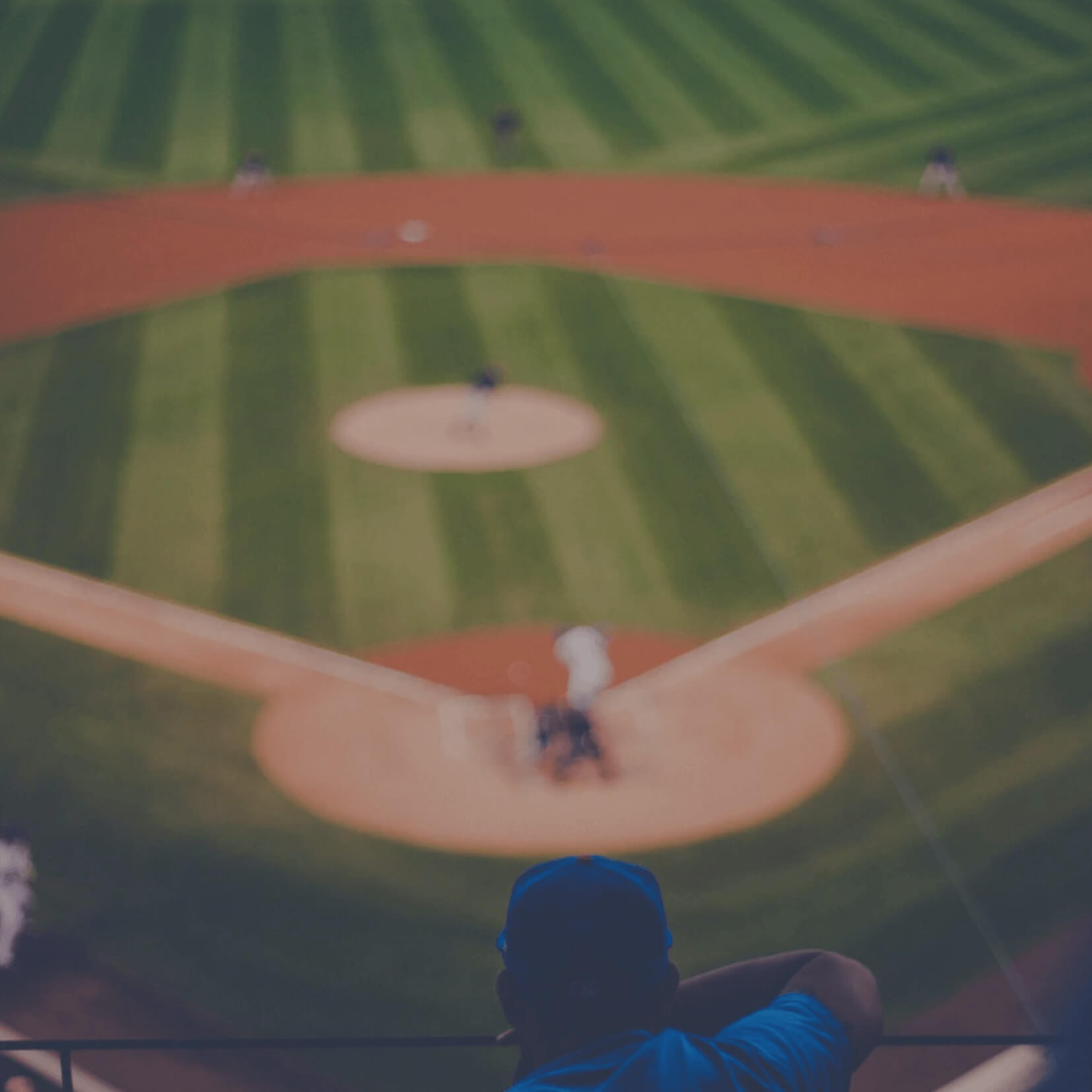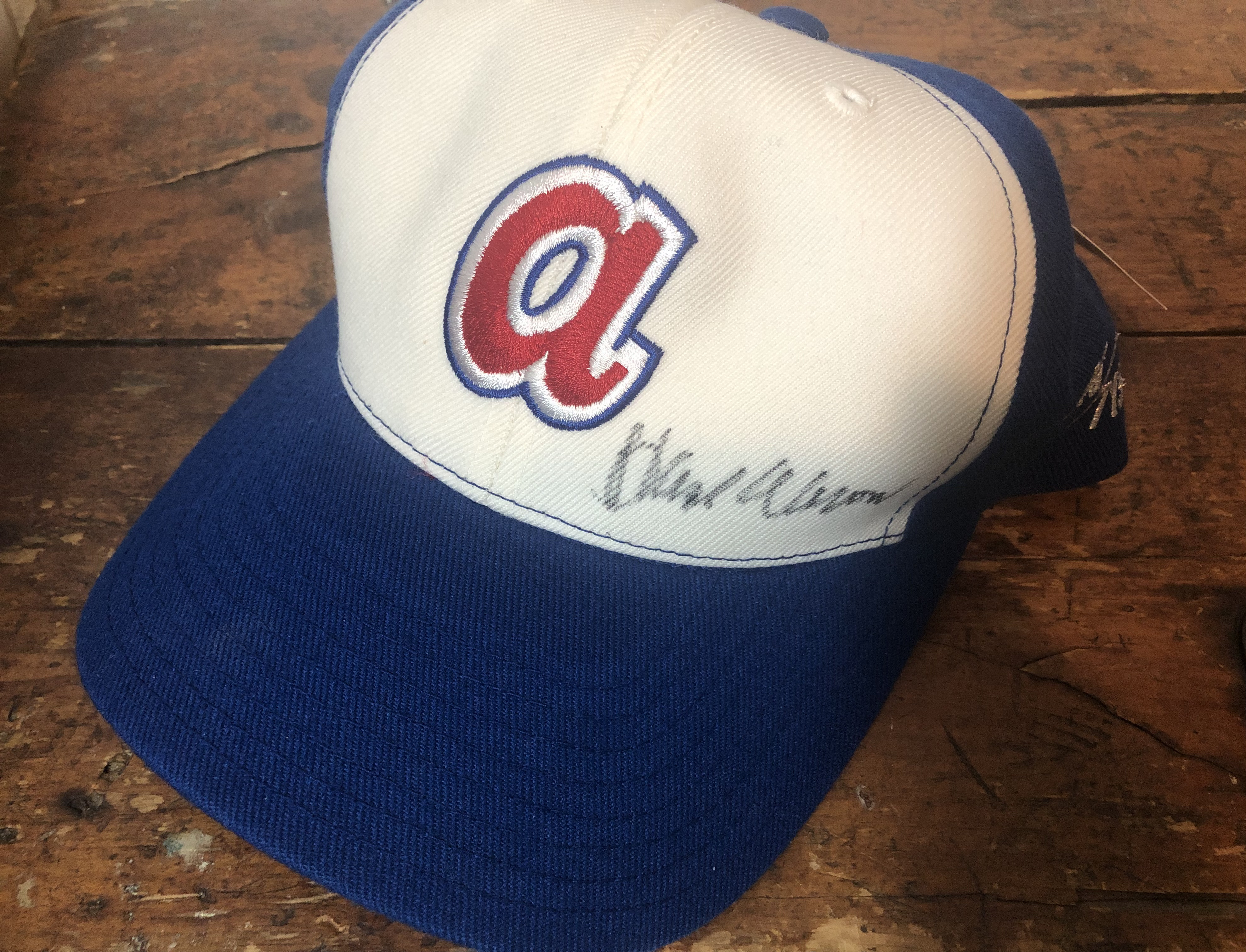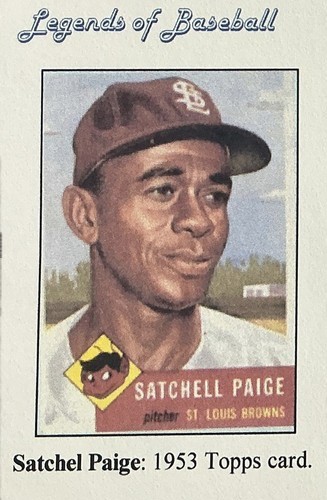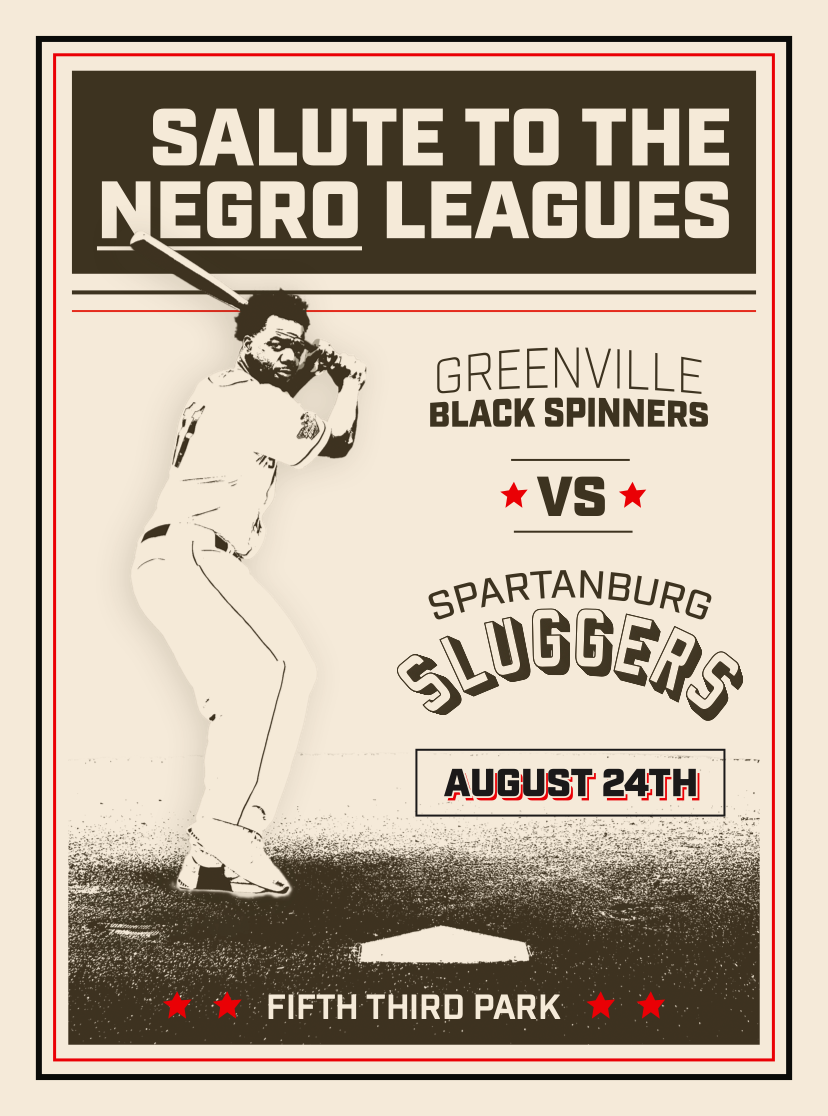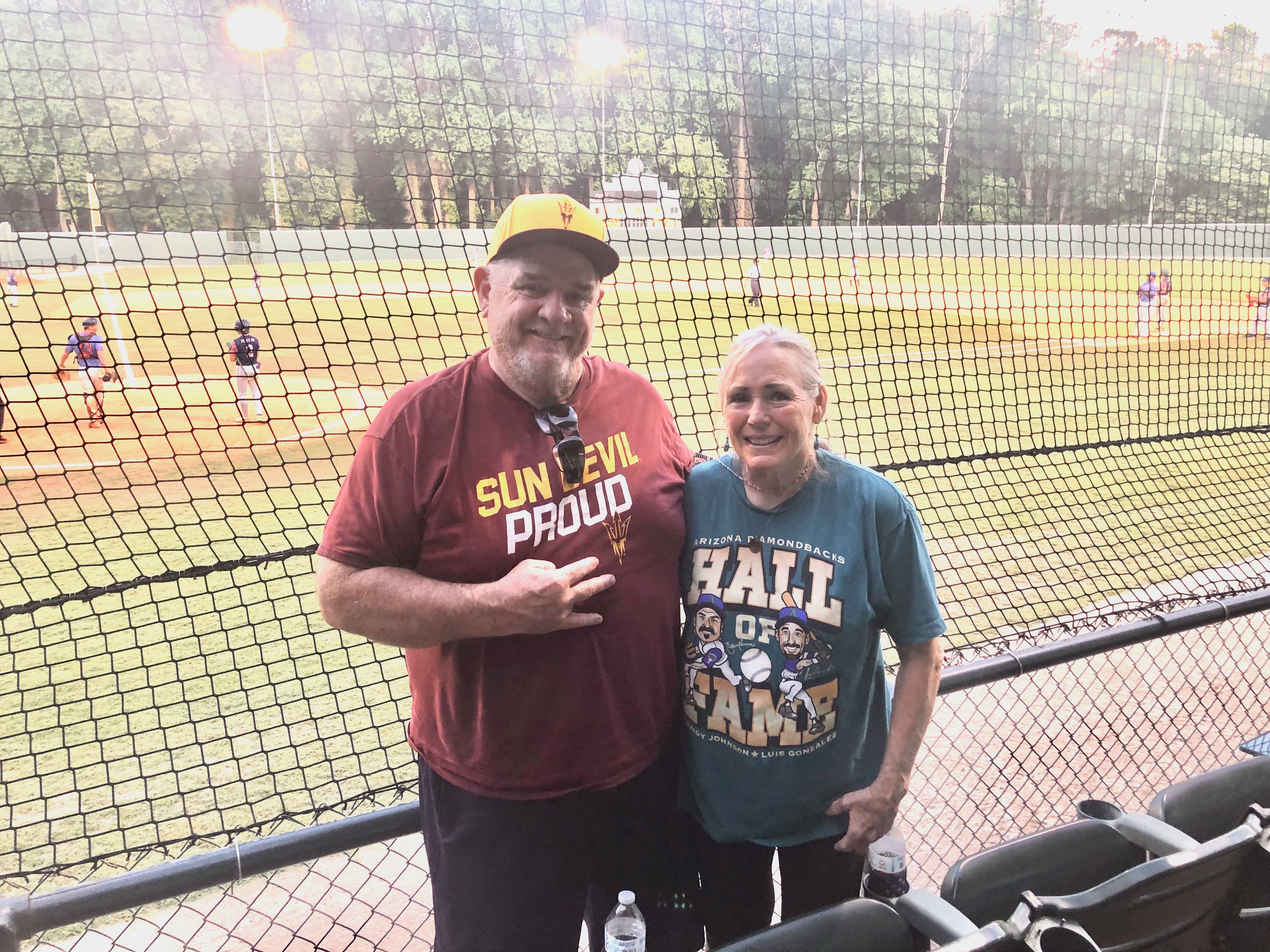
390 Ballparks and Counting...
Dr. Edwin C. Epps
Two of the fans in the grandstand at Fifth Third Park during Juneteenth weekend were Pete and Terry Peters, two diehard baseball fans from The Copper State of Arizona. Pete had read my book Duncan Park: Stories of a Classic American Ballpark on the recommendation of a friend, sent me a complimentary comment, and we decided to rendezvous in Spartanburg since he and Terry were in the midst of--I kid you not!--"an 11 week baseball journey across America" and it would therefore be easy enough for us to get together.

390 Ballparks and Counting...
Two of the fans in the grandstand at Fifth Third Park during Juneteenth weekend were Pete and Terry Peters, two diehard baseball fans from The Copper State of Arizona. Pete had read my book Duncan Park: Stories of a Classic American Ballpark on the recommendation of a friend, sent me a complimentary comment, and we decided to rendezvous in Spartanburg since he and Terry were in the midst of--I kid you not!--"an 11 week baseball journey across America" and it would therefore be easy enough for us to get together.
Luther Norman (continued), 390 Ballpark Visits, and Negro League Salute at Fifth Third Park
On Sunday, June 29, 2025, the Hub City Spartanburgers, High-A members of the Texas Rangers professional baseball organization, hosted the Aberdeen IronBirds at home in their spanking new Fifth Third Park in downtown Spartanburg, South Carolina. The Spartanburgers won the game 5-4, but of almost equal importance was the fact that this game featured the 'Burgers' celebration of Juneteenth, the nation's annual commemoration of the end of slavery at the conclusion of the Civil War
One of the visible demonstrations of this commemoration was the emergence of Luther Norman from the stadium grandstand to throw out the first pitch of the game. As readers of this blog and Duncan Park: Stories of a Classic American Ballpark already know, Luther is Director of the Youth Sports Bureau and Keeper of the Memory of the Spartanburg Sluggers, our own Negro Leagues team. The Sluggers were owned by local businessmen Big Newt and Little Newt Whitmire and played at Duncan Park stadium. Their star player was Lefty Bob Branson, often called the Southern Satchel Paige.
Luther himself played baseball at North Carolina A & T University and in the Pittsburgh Pirates Minor League system until injuries cut his career short. Since then he has remained active in the national pastime by sponsoring youth clinics and leagues, especially for area kids in neighborhoods near Duncan Park and other city park ballfields, and the semipro Palmetto Baseball Association, which plays at Duncan Park.
Luther also helps perpetuate the history and the legacy of Negro Leagues baseball in more ways than I can count. He contributed in many, many ways to the chapter on the Sluggers in my Duncan Park: Stories of a Classic American Ballpark (Hub City Press, 2023); he makes presentations to local civic clubs, historical associations, and classrooms; he brings surviving Negro League players to Spartanburg and takes local youth to out-of-town sites like the Buck Leonard Home Museum in Rocky Mount, North Carolina; and he helps the Spartanburg County Public Library to conduct interviews with Negro Leagues players for its Oral History project.
So there are many reasons why Luther was invited to throw out the first pitch at the Spartanburgers game on June 29th. I don't have a picture of Luther's delivery, but I do have photos of him preparing on the pitcher's mound and addressing the crowd afterwards:


And on another subject entirely: two of the fans in the grandstand at Fifth Third Park during Juneteenth weekend were Pete and Terry Peters, two diehard baseball fans from The Copper State of Arizona. Pete had read my book Duncan Park: Stories of a Classic American Ballpark on the recommendation of a friend, sent me a complimentary comment, and we decided to rendezvous in Spartanburg since he and Terry were in the midst of--I kid you not!--"an 11 week baseball journey across America" and it would therefore be easy enough for us to get together.
Pete and Terry and I sat together and talked for almost two hours at Duncan Park and watched the American Legion Post 28 team play Inman Post 45. It was an amazing conversation in which I learned that Pete has now visited a grand total of 390--again I kid you not!--different ballparks. These have included Major and Minor League Baseball stadiums, Negro League ballparks, idle ballparks that used to be occupied but no longer are, college ballparks, sites where American soldiers played on the frontier when Southwestern states like Arizona and New Mexico were still a part of "Indian Territory" before being admitted to the Union, places where Union soldiers played during off days or months during the Civil War, and locations where Southern men and boys learned how to play the game from Yankee soldiers stationed in the South during Reconstruction.
Needless to say, I was astounded. In fact I am still astounded. Pete had many stories about the places he and Terry have been, the ballplayers he has seen--Gaylord Perry, Nolan Ryan, Warren Spahn, Pete Rose, Orlando Cepeda, and a surprising number of legendary players from the now distant past like Ted Williams and Willie Mays--and the fun he has had.

In addition to being an interesting couple because of their fascinating "hobby," Pete and Terry are also warm and engaging human beings. As fans know, these characteristics are true of most of the strangers you meet at a ballpark. Beautiful Duncan Park attracts many of these folks who make Spartanburg a purposeful destination because of the history contained in this wonderful facility. If you spend much time browsing the internet on FaceBook, Instagram, or blog sites, you know that this is true. Celebrate and welcome the travelers when you encounter them here. Convince them that their time under our grandstand was well spent!
And speaking of baseball fanatics, most baseball fans today are familiar with SABR, the Society for American Baseball Research (https://sabr.org). Many don't know, however, that among the organization's official Groups there is a Ballparks Research Committee (https://sabr.org/research/ballparks-research-committee/), which is dedicated to ballparks of all kinds and eras and histories; and a Larry Doby Chapter (South Carolina) (https://sabr.org/chapter/larry-doby-chapter-south-carolina/), whose members are distributed across the Palmetto State and who share a wide variety of interests regarding the national pastime. Most SABR Chapters, including the Larry Doby Chapter, meet regularly in person or virtually. I encourage all serious fans of the game to become involved in these and/or other SABR Groups. If you have difficulty reaching the Chairman of a Committee or Chapter via one of these links, please let me know and I'll be glad to help.
And finally: The Hub City Spartanburgers have an especially interesting and fun afternoon game scheduled at 2:05 at Fifth Third Park on Sunday, August 24th. For one thing, this particular contest pits the 'Burgers against local rivals the Greenville Drive. For another, the game is the annual "Salute to the Negro Leagues" presented by Ingles, and our current champions will "tell the story and celebrate the rich history of the Spartanburg Sluggers." Accordingly, our Upstate opponents will memorialize the Sluggers' neighbors, the Greenville Black Spinners. This Sunday is also "Back to School Day" and the Hub City team "will be hosting a school supply drive as you come in and will be donating all supplies for those in need." In addition, the stadium on the twenty-fourth will offer a "Post-Game Kid's Run the Bases" presented by Spartanburg Regional Healthcare System. A big day indeed! Further information and a tickets link are available at https://www.milb.com/hub-city/tickets/promotions.

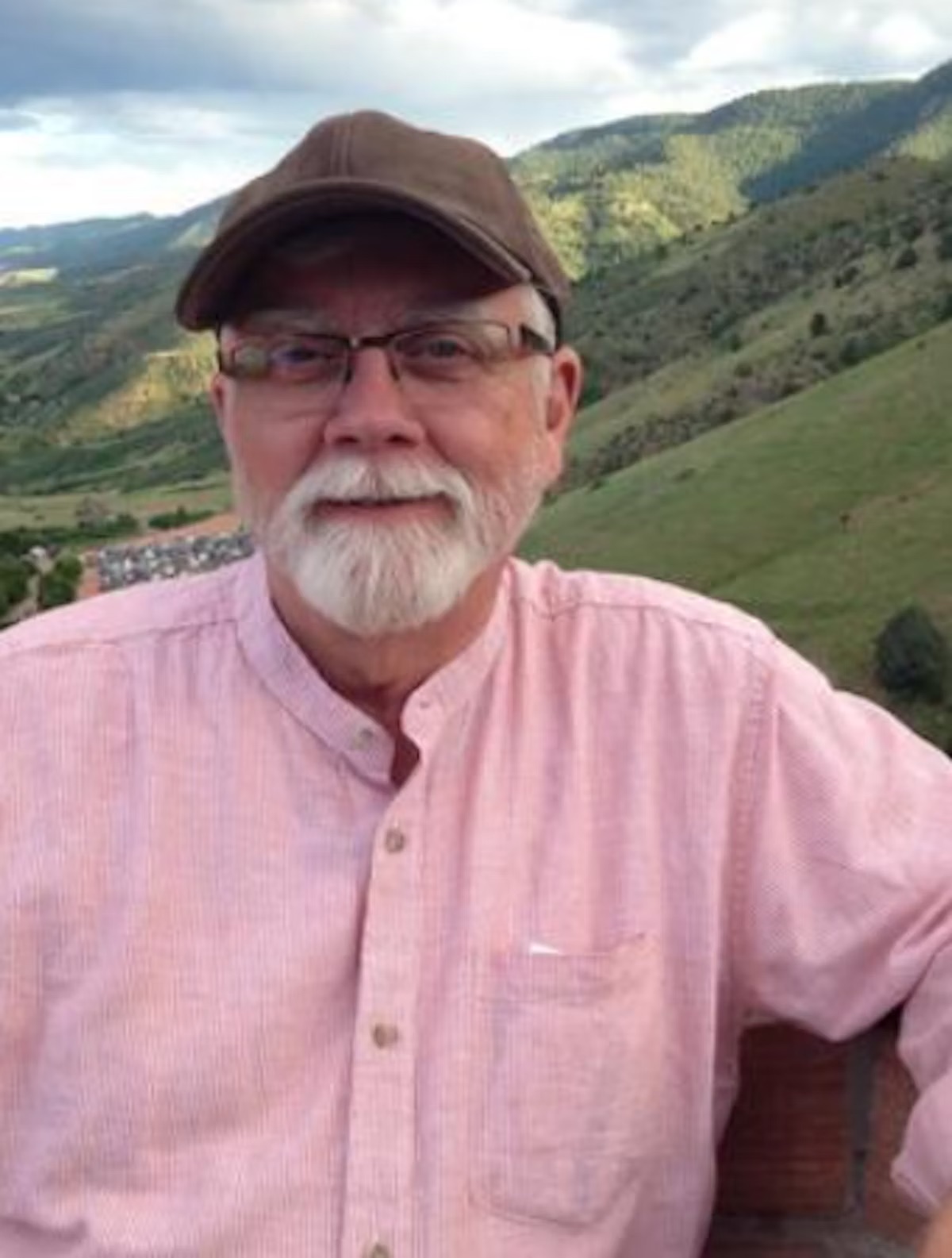
Dr. Edwin C. Epps
Author
Dr. Edwin C. Epps is a retired educator with more than forty years' experience in public school classrooms... He is the author of Literary South Carolina (Hub City Press, 2004) and a proud member of Phi Beta Kappa who believes in the value of the humanities in a rapidly changing world.
